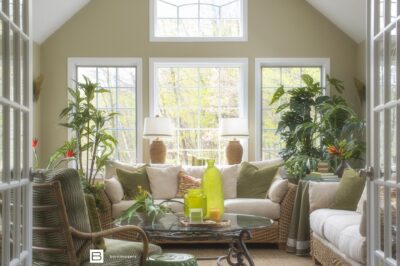We’ve all heard the saying “A happy wife is a happy life,” but have you ever thought about “A Happy Home is a Happy Homebody?”
You don’t have to be a homebody to understand the latter reference. In fact, you don’t even have to spend a lot of time in your home to conclude that if your home is happy, you will feel happy too.
This concept stems from research surrounding wellness focused interior design. Wellness focused interior design taps into our character, attitude, and beliefs – through deliberate spaces that stimulate our emotional state of mind.
Researching and achieving wellness is at the heart of numerous professions, be it healthcare, education, and even business management. Take Google for example; one of the reasons Google is so successful as a company is because of the wellness programs and resources available at the disposal of their employees.
Now, interior designers are exploring this same concept of wellness and maximizing the positive impact and energy transferred from the built environment – your home – to you – the home body.
Features such as air quality, ergonomics – the study of one’s efficiency in their environment, – and daylight access have been proven to have a substantial effect in determining the wellness of a space.

Here is how the Interior Designers at Emily’s Interiors implement wellness into their designs! You should try these too:
#1 Going Green
Quite literally. Bringing greenery as seen in the outdoors into your indoor living spaces instantly yields wellness benefits. Orchids and aloe vera plants have been some of the greatest promoters of wellness in interior design due to their ability to take in carbon dioxide and emit oxygen even at night – as opposed to other succulents that perform best during the day. Not only do indoor plants improve the air quality and humidity within your space, they can even reduce stress levels, making your home a stress-free sanctuary.
#2 Lighting is Everything
Light has the ability to work for or against our natural circadian rhythms. And while exposure to natural light can directly aid our circadian rhythm – contributing to greater productivity and steady energy in the afternoons – it is lacking in homes. In this circumstance, certain artificial light such as soft, diffused light has been designed in such a way to stimulate relaxation thus improving one’s wellness.
Blue light is also a great wellness contributor though in moderation. As seen in LED’s and electronics – blue light – can increase work productivity when installed in an office setting, however is not suitable for the bedroom due to its interference with our natural circadian rhythm.
#3 Al Natural
In terms of materials and colors. Incorporating materials such as wood and stone into your home transform a space into its mirrored outdoor setting allowing for a comforting and relaxing experience.
As for choosing colors, a neutral color palette yields the greatest amount of serenity. Different colors stimulate different emotions, however, blues and greens tend to be the most cooling and calming whilst darker colors such as black and red are more powerful and provide a punch. Research aside, the emotions colors induce are determined by you. However a color makes you feel, tap into those emotions and use said color(s) to tailor your home to you.
#4 Zen Space
Finally, designate a space to escape. While open concept can be aesthetically pleasing and allow for uninterrupted sightlines, there is no privacy. And since mental wellness is an integral part of what wellness in interior design aims to achieve, there exists a need for privacy. You need a space to leave all commotion behind. A space that serves this specific purpose and houses your means to transcend into a wellness state – be it through reading, meditating, etc.
Now these are just a few of the many possibilities on how to make your home well. Have other way you implement wellness in your home? Let us know!

